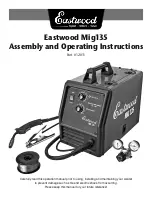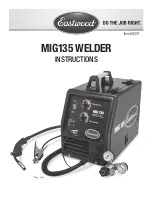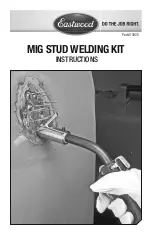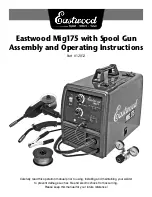
USE AND MAINTENANCE MANUAL - SECTION 1
STOCK PICKER E5P100
– Rev. 02_2020
Page 1-4
Tilting hazard
•
Before driving the machine, the user must familiarise with the surface of the work area. While
driving, do not exceed the allowed transversal and longitudinal slope.
•
Do not lift the cage or drive the machine with raised cage
(on a self-propelled machine)
on a
slope or uneven or soft surface.
•
Before driving the machine on floors, bridges, lorries and other surfaces, check their maximum
capacity.
•
Do not exceed the maximum capacity of the machine.
•
Keep the machine chassis at a minimum distance of 0.5 m from holes, unevenness, slopes,
obstacles, debris, hidden holes and other potential hazards found at ground level.
•
Do not attempt using the machine as a crane. Do not tie the machine to any adjacent structure.
•
Do not increase the size of the cage or loading platform with unauthorised extensions or by
extending the platform.
•
If the extending structure or the cage get stuck so that one or more wheels are lifted from the
ground, the operator must be made to get off the cage before attempting to release the machine.
Use a crane, forklift or other adequate equipment to stabilise the machine and have personnel
climb down from the cage.
•
(
For non self-propelled machine
) Do not move the machine with outriggers engaged (
if any
) or
with extending structure raised. Before moving the machine, completely lower the extending
structure.
Crushing and impact hazard
•
When using the machine or lifting or lowering the cage, check the distances above, at the sides
and below the cage;
•
Do not lean over the rails of the cage when the machine is running;
•
Always pay the utmost attention to prevent the operational controls and people in the cage from
being hit or hindered by any obstacles;
•
Ensure the operators of other machines at a height or at ground level are informed of the
presence of the machine;
•
Warn personnel not to work, stand or walk underneath the lifted cage;
•
When driving in areas where visibility is limited by obstacles, always have a person walk in front
to alert you of any dangers;
•
While driving, always keep non-operational personnel at a minimum distance of 2 m from the
machine.
•
Adjust the driving speed according to the following conditions: ground surface, traffic, visibility,
slope, location of personnel and other factors that may pose a risk of collision or injuries to
personnel;
•
Consider the braking distances, regardless of the speed of the machine;
•
Do not drive at high speed in restricted or narrow areas or when reversing.









































